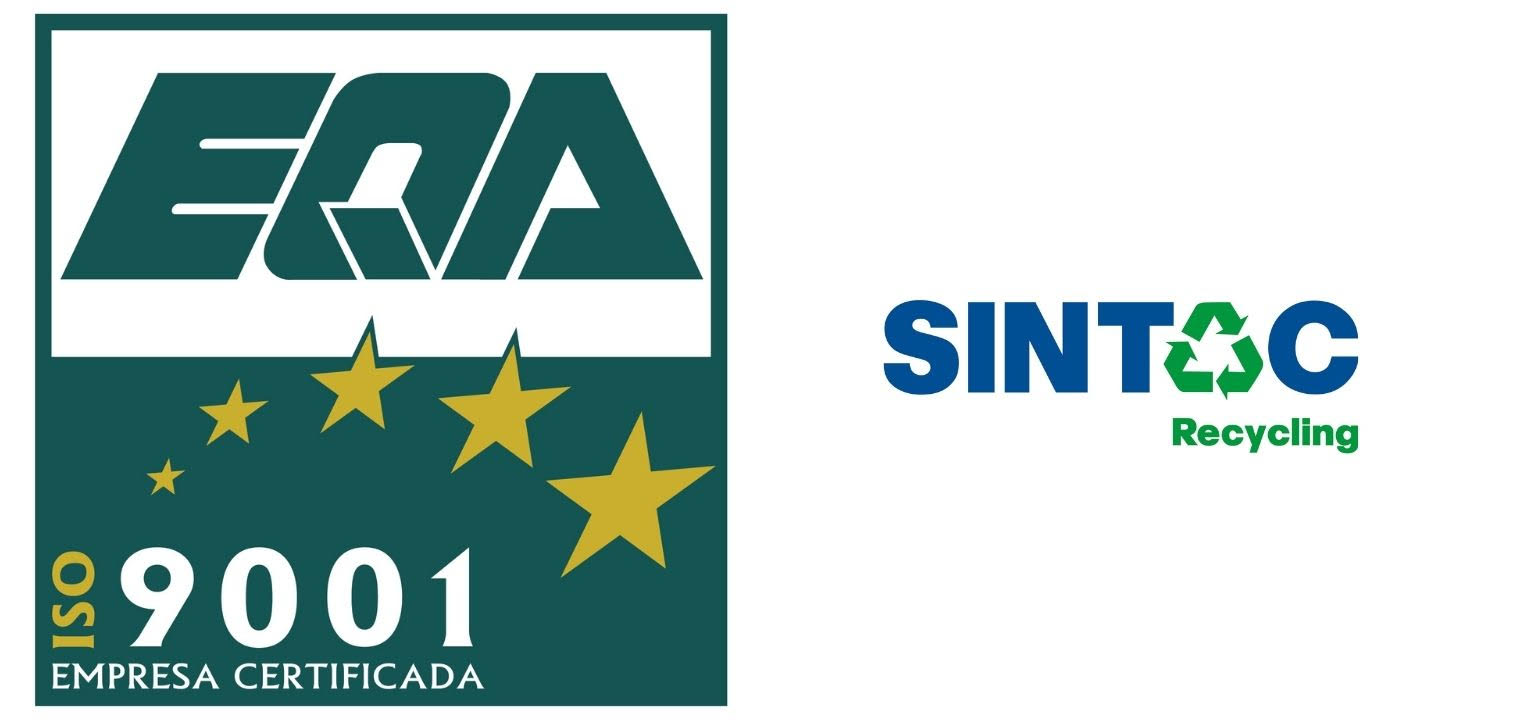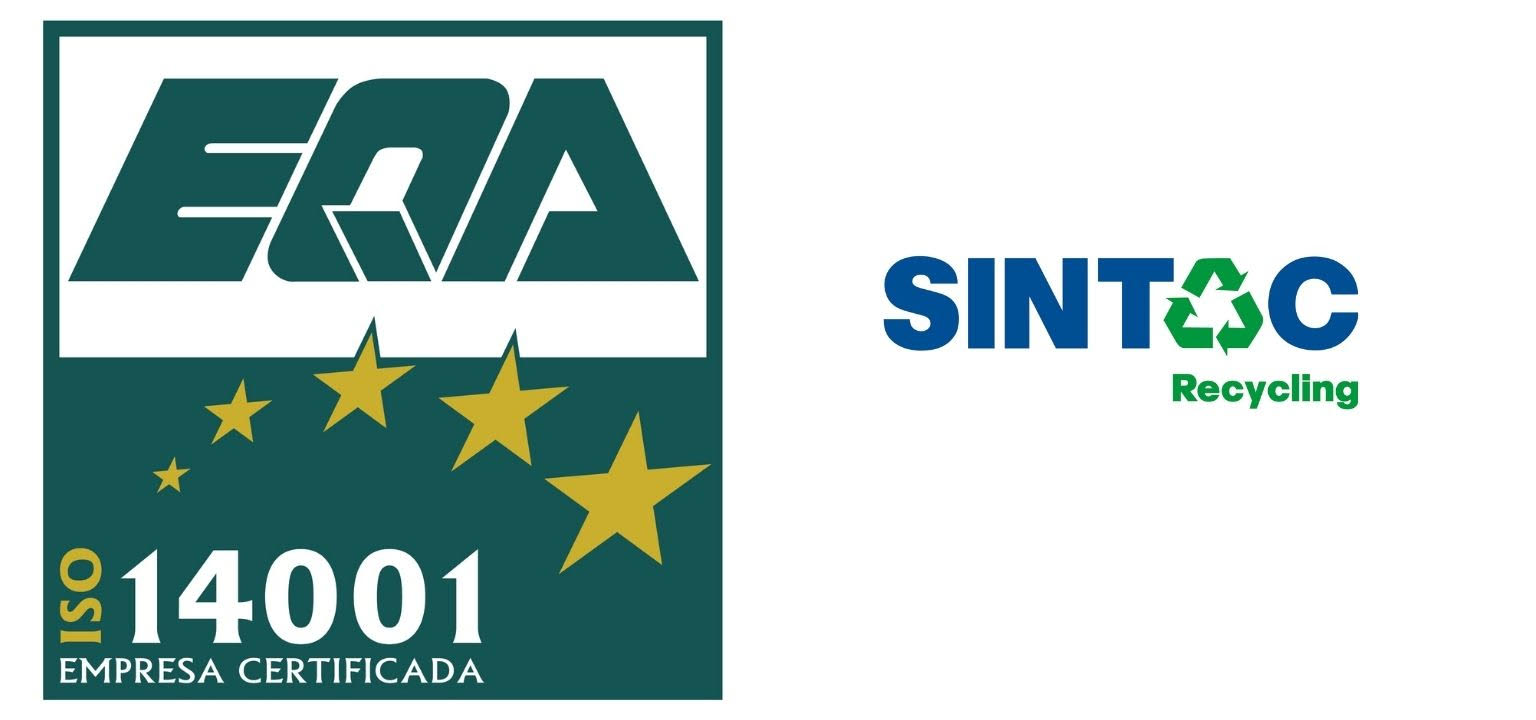SINTAC Recycling has been ISO 14001 and ISO 9001 certified since 2013
Since 2013, SINTAC Recycling has had Environmental and Quality Management Systems certified in accordance with ISO 14001 and ISO 9001 respectively.
What is ISO?
ISO stands for International Organization for Standardization, which translates into English as the International Organization for Standardization.
The organisation was created in 1946 with the presence of 64 delegate representatives from 25 countries and its main activity is the elaboration of international technical standards.
In 1951, its first standard was published, which was considered simply a “recommendation”.
Since then, more than 19,500 standards have been developed for all sectors (industry, health, food, technology, etc.) and today the organisation has members from 160 countries and 782 technical committees and subcommittees.
Do you know what Sintac’s ISO 9001 certification is based on?
ISO 9001 is the international standard, an international norm, for Quality Management Systems (QMS), published by the International Organisation for Standardisation.

Commitment to quality management
This standard is based on a series of principles that focus above all on the process management of any organisation, the satisfaction of the end customer, the monitoring of external suppliers and continuous improvement.
In other words, ISO 9001 is an international standard that regulates quality in any type of organisation. It is made up of 65 requirements that an organisation must meet in order to obtain such certification. The requirements are based on four basic pillars:
- The management of the internal processes of the organisations.
- Monitoring and control of external suppliers.
- Customer satisfaction.
- Continuous improvement of the organisations.
Performance improvement
Companies and organisations that use ISO 9001 certification demonstrate quality management systems (QMS) that focus on all the elements of quality management that an organisation must have in order to have an effective system to manage and improve its products and services.
Managing your company’s reputation
Demonstrating high levels of quality compliance leads to customer satisfaction, because they receive products or services that meet their expectations, to shareholder satisfaction, because the company’s economic profit increases (the main objective of business activity) and to creating a pleasant environment for employees.
The competitive advantages of improving the image are reflected not only in the external market, but also internally, raising awareness and motivating employees.
Do you know what Sintac’s ISO 14001 is based on?
The ISO 14001 – Environmental Management Systems (EMS) certification is an international standard that allows companies to demonstrate their commitment to environmental protection through the management of environmental risks associated with their activities. By assuming environmental responsibility, in addition to reducing the environmental impact of its activity, the company’s sustainable image is projected and reinforced.

ISO 14001 assists in the identification and management of environmental risks associated with the internal processes of the organisation’s activities. This standard identifies requirements for effective risk management, considering prevention and environmental protection, legal compliance and socio-economic needs.
EMS certification to the ISO 14001 reference standard is an essential tool for companies and organisations wishing to gain greater confidence from customers, employees, the community and society as a whole. This vote of confidence comes from the voluntary demonstration of commitment to continual improvement of environmental performance.
ISO 14001 certification is based on the PDCA (Plan-Do-Check-Act) cycle methodology and uses familiar management terminology and language, presenting a number of benefits to the organisation, in particular:
Environmental commitment
Companies and organisations that use ISO 14001 certification thus demonstrate their commitment to sustainable management, ensuring that their performance improves. The incorporation of environmental issues into the management of the organisation and the increased involvement of senior management and employees in environmental management enables the successful implementation of strategic objectives.
Performance improvement
Compliance with ISO 14001: 2015 enables the improvement and optimisation of resource management through the rational use of resources, thereby reducing the likelihood of environmental risks, such as emissions or spills.
By improving process efficiency, the costs associated with poor management such as fines or insurance are reduced, benefiting from reduced consumption.
Managing your company’s reputation
By demonstrating high levels of environmental compliance and reducing the risks of non-compliance and the resulting penalties, organisations prove their values and commitment to the environment. The competitive advantages of improved image are reflected not only in the external marketplace, but also internally, raising awareness and motivating employees.
The ISO (International Organisation for Standardisation) standards recognise the need for standardisation of management tools in the environmental domain, with ISO 14001 being the reference standard for the implementation of an Environmental Management System, which specifies the auditable requirements for certification purposes, and ISO 9001 for the effective establishment of a Quality Management System.
At SINTAC we are very proud to have both certifications and we work daily to offer the best service to our clients.












